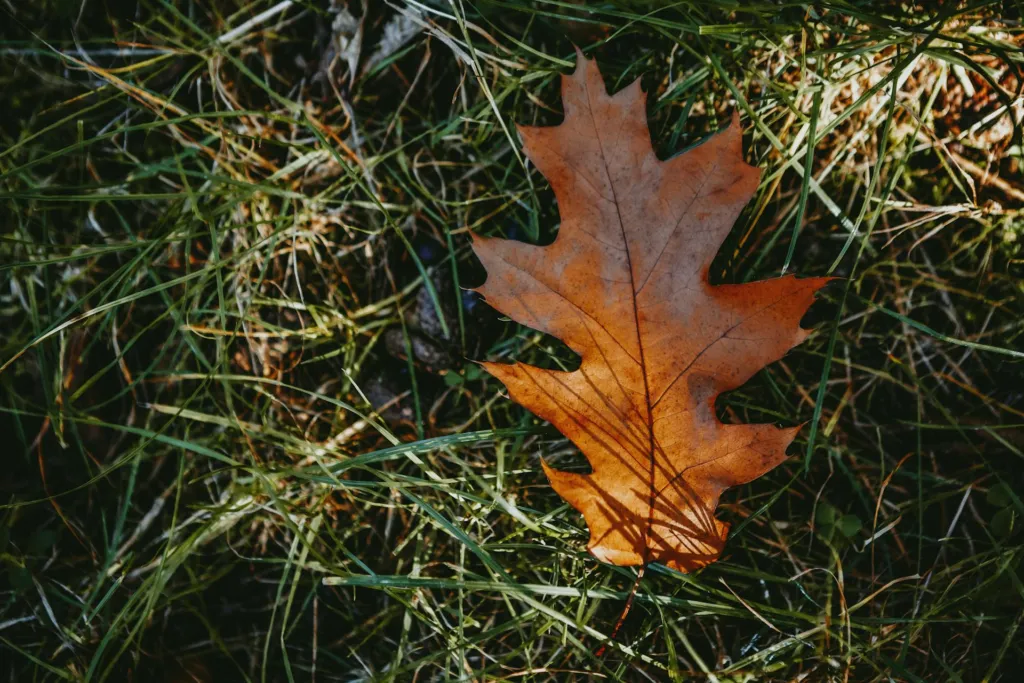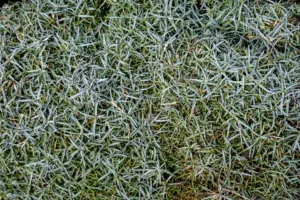
All About Cool-Season Grasses in the Midwest
Discover the Best Ways to Care for Lawns in OH and MI
The northern part of America mainly has cool-season grass. Homeowners love the soft texture and thick appearance of these grasses. Even better, it can stay green for the entire year.
Ready to learn more about cool-season grasses? This lawn care article boasts tips about watering and mowing, typical cool-season features, and so much more. Remember, understanding your turf and trusting the pros at NexGreen will help you keep your yard looking amazing.
Cool-Season Grass Locations
Cool-season turfgrasses are primarily situated over the northern and central parts of the United States. These grasses are tolerant enough to withstand freezing temperatures without dying and thrive in areas where the heat of summer is usually moderate and short in duration.
The real challenge is across the Transition Zone, a middle swath of the country where it gets too hot for cool-season grasses and too cold for warm-season types. Homeowners within this belt face a difficult choice, and end up with a lawn that is brown during either summer or winter, depending on the type of grass they choose.
Many Transition Zone property owners plant tall fescue or zoysia grass to better manage these extreme seasonal fluctuations. Although this is not a perfect solution, it is much better than having a lawn that is totally dormant for an entire season.

Favorites Kinds of Cool-Season Grass
Kentucky bluegrass is similar to perennial ryegrass as it forms a lush, thick lawn, has a blue-green color, and its blades are soft to the touch, but it prefers well-sunlit areas. The major drawback with it is that it needs high maintenance, which includes regular mowing, frequent fertilizing, and sometimes supplemental watering during dry periods.
In addition, it regenerates and spreads via underground rhizomes. It will always recover after damage but shows low tolerance to drought and requires supplemental watering in extreme heat.
Fescue is a versatile grass that thrives in shady conditions, and may live under nearly any soil condition from heavy clay to very sandy soil.
Fine fescue is a very low-maintenance grass, as it grows very slowly, thus requiring less frequent mowing, fertilizer, and water than other cool-season types. A good choice for those who want a beautiful lawn with very little care.
Tall fescue has a deeper root system than Kentucky bluegrass, thus giving it much better drought tolerance and a good alternative for the difficult Transition Zone climate.
Perennial ryegrass is best adapted to high-traffic areas, as it resists wear, suffering less than most other cool-season types. For this, it is commonly used on sports fields and public parks.
It also germinates fast, which will help with filling in bare spots of your yard quickly. On the other hand, it does not spread through rhizomes or stolons as Kentucky bluegrass does and cannot self-repair naturally when thin or damaged areas develop.
It develops quickly, so it’s convenient for overseeding exposed areas. It does not run on stolons or rhizomes like Kentucky bluegrass, though, so it will not fill in vacant places on its own.
Is it okay to mix grasses? A mix of species is often better than relying on a single one. For instance, a mix of Kentucky bluegrass and fescue has the best features of both species (the density of Kentucky bluegrass along with improved shade and drought tolerance from the fescue).
This also reduces the danger of having a disease take out the entire lawn, as other species help mask an individual variety’s fungus issues. These mixed turfs can be achieved through overseeding with a complementary variety over an existing lawn, filling in gaps and increasing the overall hardiness.
Defining Cool-Season Grasses
For property owners in northern climates, lawns often look their best during the spring and autumn. That is because these lawns are composed of cool-season grasses, which grow most actively in temperatures ranging from 60°F to 75°F.
Their photosynthetic process is different from that of warm-season grasses, making them better suited to frost, limited sunlight, and cool conditions. They go dormant during periods of extreme heat or cold, during which time they temporarily stop growing.
Identifying Cool-Season Grasses
You can identify the particular grass in your lawn by looking at these key characteristics:
- Blade Anatomy: Pay attention to the leaf blade veins and to its luster. For example, perennial ryegrass has a glossy sheen while Kentucky bluegrass is duller.
- Growth Pattern: Grasses can be bunch-forming, growing in clumps, rhizomatous, spreading underground, or stoloniferous, spreading via surface runners. Kentucky bluegrass fills in bare spots via rhizomes.
- Seedhead Shape: During reproduction the seedhead may be a panicle (branched, as in bluegrass), a spike (unbranched), or a raceme (flowers on short stalks).
- Vernation: This refers to the method by which a young unfolding leaf emerges from the stem. It will either be rolled or folded. Ryegrass is rolled; bluegrass is folded.
- Ligule and Auricles: The ligule is a tiny membrane at the junction of leaf and stem. Small, claw-like structures grasping the stem are auricles. Ryegrass has distinct auricles, but bluegrass doesn’t have them.
Irrigation Recommendations for Cool-Season Lawns
Cool-season lawns generally use approximately 20% more water than warm-season lawns, especially during the summer months. In general, it requires 0.5 to 1.5 inches of water per week, depending on sun, soil, and weather.
- Lawns in full sun need about 1 inch per week.
- Lawns with a mix of sun and shade need about 0.75 inches.
- Heavily shaded lawns require approximately 0.5 inches.
The most effective method is deep, infrequent watering that penetrates to the root zone rather than brief, daily sprinklings, which promote shallow roots, reduce drought tolerance, and encourage crabgrass.
The ideal time to water for maximum water pressure and low evaporation is between 4 a.m. and 8 a.m. Soil type plays a crucial role in the watering schedule, too. Clay soils retain water, while sandy soils drain very quickly.
Tips for Mowing Cool-Season Grass
- Maintain a mowing height of 3 to 4 inches, taking no more than one-third of the grass blade off during any single mowing.
- Make adjustments according to the season: more in spring and fewer in summer.
- The common mistake of not mowing high enough weakens the roots, along with increasing vulnerability to pests, diseases, drought, and weeds. Raise the mower by 0.5 to 1 inch above your normal mowing height for areas that receive shade.
- Leave the clippings on your lawn to return nutrients to the soil, and always maintain sharp mower blades to provide clean cuts without disease.
Fertilizing Lawns in the Midwest
The best time of year to fertilize your lawn is from late summer into autumn. This allows the lawn to recover from summer, increases density, and prepares it for winter without spurring excessive top growth.For a twice-yearly schedule:
- September: Apply 1 pound of nitrogen per 1,000 square feet.
- Early November Apply 1 to 1.25 pounds of nitrogen per 1,000 square feet.
Early spring applications will help hold color but use a slow-release fertilizer to avoid rapid growth. Nitrogen is key for color and leaf development in established lawns.
In new lawns, however, phosphorus and potassium are more critical for root development. Proper fertilization maintains a thick turf that naturally suppresses weeds.

Overseeding & Lawn Recovery
The best time to plant is in the late summer or early fall, when the soil temperatures are between 55°F and 65°F. This allows the grass to become established with good root development. Aerating and dethatching may be necessary prior to seeding.
Thatch is a layer of organic residue; a thin layer is not a problem, but an excessive amount prevents water and nutrients from reaching the soil. This results in stress, as it causes the roots to grow in the thatch, not in the soil. Keep the soil consistently moist after overseeding until the new grass becomes established.
Common Issues of Cool-Season Lawns
Fungal diseases often show up as colored or deformed grass. Prevention measures include morning watering, proper mowing height, and healthy soil. Soil compaction and thatch buildup are also common issues. Both are remedied by core aeration.
Iron chlorosis, or yellowing from an iron deficiency, is likely in alkaline soils. It is corrected with iron supplements. Other nutrient deficiencies can be readily resolved with the appropriate amendments.
FAQs About Cool-Season Grasses
What’s the best grass for shade?
Fine fescue tolerates shade much better than most other cool-season turfgrasses. That being said, grasses like the sun. So no grass truly thrives in dense shade where it receives less than 3-4 hours of sunlight per day.
Can I mix warm- and cool-season grasses?
Mixing warm and cool-season grass is not advisable due to their different growth patterns. The end result would be a spotty, brown lawn depending on the season.
How long does grass seed take to grow?
It depends on the variety. In general, perennial ryegrass germinates within 5-10 days, tall fescue does within 7-12 days, and Kentucky bluegrass takes the longest, from 14-30 days. This all depends on soil temperature and moisture levels.
Can I grow cool-season grass in summer?
Cool-season grass can be planted in summer, but that’s less than ideal because the heat stresses new seedlings, and the germination rate drops by about half compared to fall planting.
Trust Your Lawn to the Pros!
Cool-season grasses need to be mowed, watered, and fertilized properly to stay healthy. But now you know a few tricks: understanding your type of grass, providing it with what it requires at the right times, and contacting the professionals at NexGreen for expert lawn care!
We offer lawn care services in Ohio communities around the areas of Westerville, OH and Columbus, OH.
We also provide pest control and lawn care services in Michigan for areas near Sterling Heights, MI and Rochester Mills, MI.
